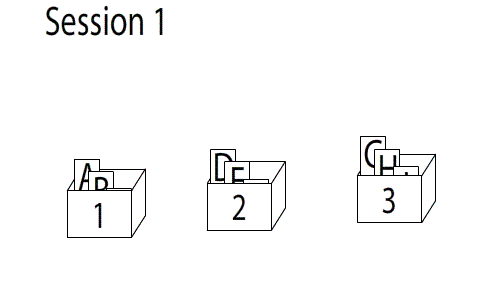We want to learn things faster but we just can't quietly because we forget. Maybe we need to change our methods of learning to activate our long-term memory.
I searched "learning methods" on the internet. I saw something called "Spaced Repetition". It claims to memorize approximately 90% of something we learnt if we repeat it frequently.
We, human beings forget if we don't repeat. These are not my sentences it belongs to German psychologist Hermann Ebbinghaus, Father of Spaced Repetition technique.

Foundation of Spaced Repetition is based on his hypothesize "Forgetting Curve".
Forgetting Curve says if you don't try to hold information in your memory you lose significant amount of it by time.
Ebbinghaus proposed methods to strengthen memory against this weakness. One of these proposals is Spaced Repetition. He said that repetition with certain intervals will flatten the curve.

There is a question that should be asked. How to repeat?
Time to dive in Leitner System. German science journalist Sebastian Leitner build a repetition model based on Spaced Repetition.
There are boxes and cards. We have boxes called A,B,C and bunch of cards with information on them. if we correctly answer a card which is in B, then we put it into C. if we fail, we put into A.

I think you might understand better with a gif. There are websites to build your own Flashcards. So we don't need boxes and cards anymore. You can also use this technique without Leitner's Flashcards system.
Let's examine the "Space" part.
In psychology, there is a effect called "Spacing Effect". Spacing effect says that learning which is spaced is more efficient. It helps to hold information in your long-term memory.
As we mentioned before Ebbinghaus is the first ever person who came with "spaced learning".
As a result of a research conducted in 2013 [1] , Distributed practice (another form of spaced repetition) is found one of the most efficient techniques.

How to make your repetition schedule without creating mess?
I recommend you to create it based on Geometric Sequences. There is a website called "spacer" that I created for generating repetition schedule with using Geometric sequences. You can edit repeat day as you want for avoiding from mess. Busy section shows you how many tasks do you have on that day.

n = Repeat number (5)
r = Repetition Coefficient (2.5)

But Don't forget if you want to learn you need consistency. Whatever your technique you need focus on process.
Thanks for reading.
Sources:
[1] https://pubmed.ncbi.nlm.nih.gov/26173288/

